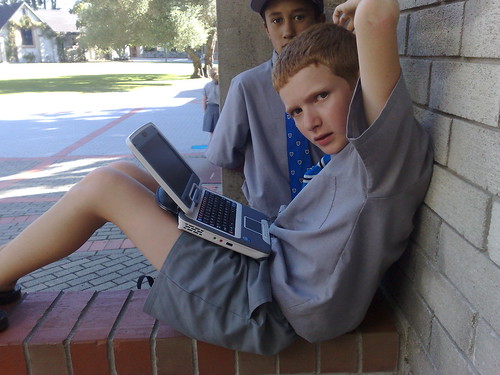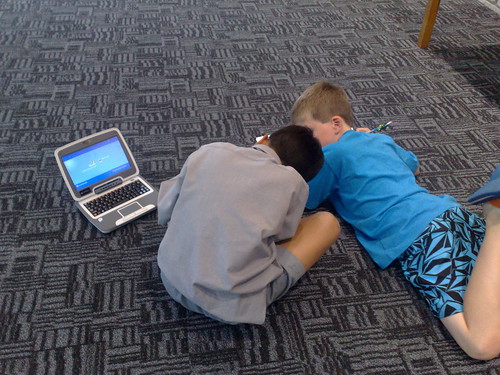It’s 2.59 and the dog has come around to the front of the house and woken me. There have been a lot of thoughts in my head about blogging its relationship to learning and now am in front of the computer putting them down.
A New Zealand teacher posted some pictures of students running a cross country. The purpose of this was for parents to be able to see their children and the children to see themselves online. What followed was a series of opinions criticising the use images and names and implying the teacher should not be blogging because of lack of understanding of net safety and protocol. What a post on whaleoil's blog shows in my mind the need to prepare for comment or controversy where we least expect it.
Can we just grow up in public?
We engage in blogging to change our personal or community worlds. A post is out in the global domain may be seen as a statement even if we don’t intend it to be. A process is taking place where we are often adjusting our thinking, forming opinions and learning.
- What happens if we don’t follow protocol?
- We say something that our schools for example don’t believe in?
- What happens if we make a mistake?, Have a bad moment?
- What happens if someone takes issue with what we have to say?
- What are the risks if we are blogging at school as a classroom community?
Firstly I do not believe the greatest risks are from Stalkers or paedophiles as some would have us think. A photo and a student’s first name is a responsible risk. In New Zealand the ministry of education guidelines for inclusion of images is here. With parents permission there is no issue here. The teacher posted some pictures of students running a cross country. The purpose of this was for parents to be able to see their children.The greatest risk I see with blogging are pedants and nitpickers.

To help survive this risk
- find out about blogging from an experienced leader, doer and thinker such as Dorothy Burt
- try to make sure our words make sense (not always a strong point of mine)
- read other class blogs and online material
- realise that our audience may not be who we think they are
- care mostly about our preferred audience (the one we want to engage)
- develop a thick skin i.e. accept that we may fail at first but that is not a bad thing
- moderate comments if it is a class blog or students
- think about the content of other online presences we may have and how they are linked eg facebook
Also realise the benefits of blogging
We can see blogging changing peoples personal worlds and creating

Blogging should be innately positive because it is based on choice
With so many people choosing to express themselves there seems a good match to
William Glassers model of Survival. Are we blogging for Survival? I have used this model
a few times and acknowledge Joan Dalton and David Anderson who introduced me to it.

So keep up the blogging or start if you wish to.
For Me I am looking to Work out what it means for our school as a community this term.
There are some more thoughts here in a guide to educational blogging from Microsoft.
And a more comprehensive reflection http://learningweb2.wikispaces.com/Important+considerations

















